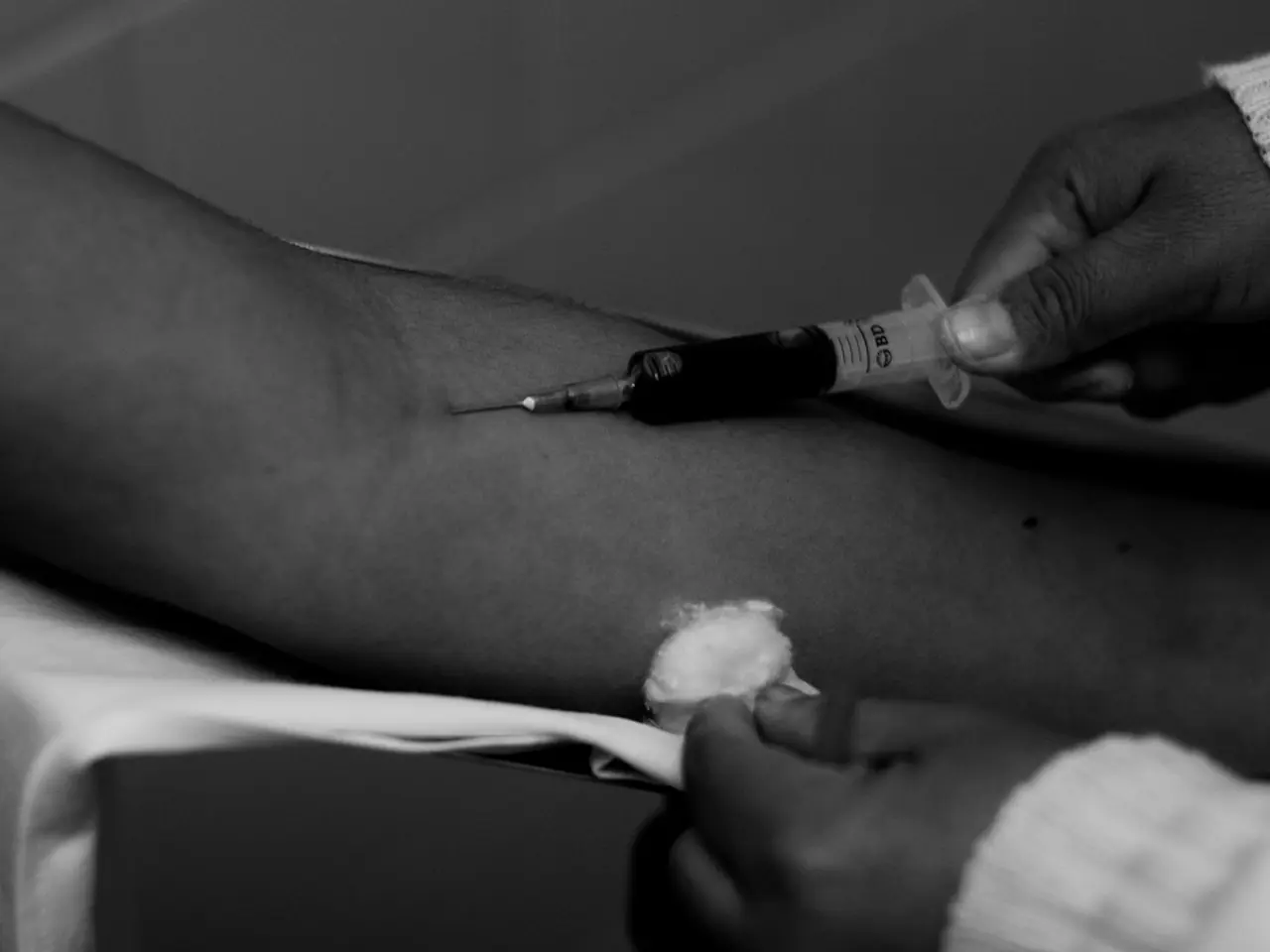Chin Augmentation Results: Duration, Pre- and Post-Treatment Facts, and Additional Insights
Chin enhancement procedures have become increasingly popular as people seek to improve the definition of their chin and jawline. This article provides an overview of three common methods: chin filler injections, chin implants, and fat grafting.
Chin Filler Injections
Chin filler injections, mainly using hyaluronic acid (HA), offer a minimally invasive, reversible option for chin augmentation. The procedure involves injecting temporary dermal fillers into the soft tissues of the jaw.
Pros
- Reversible: Chin filler injections can be reversed using hyaluronidase, a naturally occurring enzyme.
- Shorter recovery: Compared to surgery, recovery time is typically shorter for chin filler injections.
Mild Side Effects
- Transient swelling
- Redness
- Bruising
- Soreness
Moderate Complications
- Delayed nodules
- Asymmetry
- Migration
- Infection
Severe Rare Risks
- Vascular occlusion causing tissue necrosis, blindness, nerve damage, chronic granulomas, and permanent disfigurement from migration ([1], [3], [5])
- Long-term risks increase with permanent fillers (e.g., PMMA), which can cause chronic inflammation and granulomas ([1], [4])
Chin Implants
Chin implants provide a permanent solution for chin augmentation. The surgery is usually an outpatient procedure that takes less than an hour to perform.
Pros
- Permanent: Chin implants offer a predictable shape and permanence.
Risks
- Infection
- Hematoma
- Implant malposition or extrusion
- Scarring
- Numbness or sensory changes in the chin/lower lip
- Under or overcorrection
- Delayed wound healing ([2])
- Requires surgery under anesthesia with associated recovery and surgical risks
Fat Grafting
Fat grafting is a natural alternative to chin filler and implants. The procedure involves liposuction, purifying the harvested fat, and reinjecting it into the face. Approximately half of the fat injected permanently survives at the new site.
Risks
- Fat resorption (leading to volume loss)
- Uneven contouring
- Cyst or calcification formation
- Infection
- Necrosis
- It is more permanent than fillers but less predictable than implants
In summary, chin filler injections offer a less invasive, reversible option but with potential for both transient and rare severe complications, especially if permanent fillers are used. Chin implants provide a permanent solution at the cost of surgical risks and longer recovery. Fat grafting is a natural but less predictable alternative with its own resorption-related risks. Selection depends on patient preference, tolerance for surgery, permanence desired, and risk profile. Consulting an experienced specialist is crucial to minimize risks in all procedures.
People who are unsatisfied with the appearance of their lower face may consider chin filler, fat grafting, or chin implants to enhance the contour and definition of their chin. The cost of chin filler injections can vary based on factors such as the doctor's expertise, type of filler, type of procedure, geographic location, and time required.
It is essential to remember that anyone considering any of these procedures should speak with a board certified cosmetic surgeon to discuss the best option and their suitability for the procedure.
[1] https://www.ncbi.nlm.nih.gov/pmc/articles/PMC6088021/ [2] https://www.ncbi.nlm.nih.gov/pmc/articles/PMC6309411/ [3] https://www.ncbi.nlm.nih.gov/pmc/articles/PMC6018751/ [4] https://www.ncbi.nlm.nih.gov/pmc/articles/PMC5812424/ [5] https://www.ncbi.nlm.nih.gov/pmc/articles/PMC4174655/
- While exploring the options for chin and jawline enhancement, it's crucial to consider the risks associated with each procedure, such as the potential complications from cancer-like growths (chronic granulomas) due to permanent fillers.
- The field of science has made significant strides in understanding and mitigating the risks associated with atopic dermatitis, a chronic inflammatory skin disease that can exacerbate side effects from chin filler injections.
- Some individuals may also struggle with health-and-wellness issues like migraine or ulcerative colitis, and they should consult their healthcare provider before undergoing any surgical procedures, such as chin implants, to ensure their safety.
- For those with multiple chronic conditions, opting for a minimally invasive solution like chin filler injections might be a better choice, considering the shorter recovery time and lower risk of complications compared to fitness-and-exercise-related injuries.
- The predictive nature of chin implants can be appealing to some, but it's essential to be aware of health risks like hepatitis transmission from unsterilized equipment used during surgery.
- In addition to external factors like surgical risks, it's important to prioritize proper skin-care routines to maintain skin health and minimize post-procedure complications, like scarring caused by dermatitis or infection.
- By considering the potential risks and benefits of chin filler injections, chin implants, and fat grafting, individuals can make informed decisions about the best course of action to achieve their desired health-and-wellness goals and improve their overall fitness-and-exercise performance.
- Sclerosis, a disease that affects the nervous system, can increase the risk of rare complications during chin augmentation procedures, making it essential to disclose any medical history to the healthcare provider before undergoing any surgical interventions.
- While seeking advice from a board-certified cosmetic surgeon is crucial, patients can also help minimize risks by conducting diligent research on the various procedures, understanding their individual health and disease profiles, and making well-informed, thoughtful decisions regarding their chin enhancement needs.




